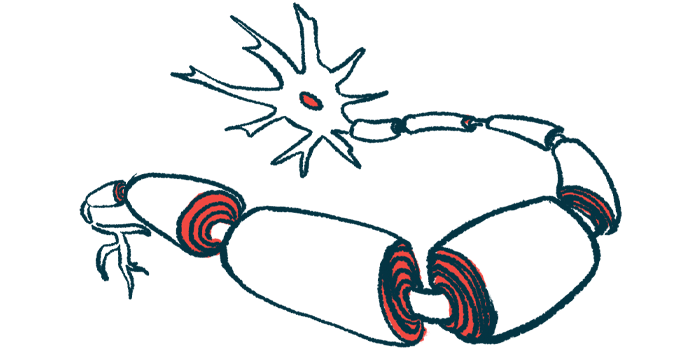Lab Results Support Advancing QRL-201 to Clinical Trial

An investigational antisense oligonucleotide (ASO) molecule that works by increasing the production of Stathmin-2 protein effectively reversed a number of neurodegenerative processes in lab-grown motor neurons, the cells that are damaged in amyotrophic lateral sclerosis (ALS), a study found.
The rescue occurred even in the absence of TDP-43, a protein that controls the levels of Stathmin-2 in cells, and translated into healthier motor neurons with more and longer neurites. A neurite is a projection that usually conducts impulses away from the body of a neuron to other cells.
The findings support the use of QRL-201, an investigational therapy being developed by QurAlis to increase the levels of Stathmin-2 in motor neurons, for the treatment of ALS. A first clinical trial is expected in late 2022.
“Our research shows for the first time the connection between STMN2 [Stathmin-2], TDP-43, and important cell biology of ALS,” Daniel Elbaum, PhD, QurAlis’ chief scientific officer and one of the study authors, said in a press release.
“These findings, which include potent rescue of relevant neurodegenerative phenotypes by QurAlis’ ASOs, further validate our approach and our therapeutic product development candidate QRL-201, for the recovery of STMN2 expression in ALS patients,” added Elbaum.
The poster with the findings, “The time course and impacts of TDP-43 loss on stathmin-2 gene expression, protein abundance, Golgi apparatus morphology, neurite outgrowth, and response to proteotoxic stress in human induced pluripotent derived motor neurons,” was presented at the 32nd International Symposium on ALS/MND, held virtually Dec. 7–10.
Previous research led by Kevin Eggan, PhD, QurAlis’ co-founder and a Harvard University professor, showed that the low levels of Stathmin-2 in patients with ALS are due to impaired function of TDP-43, a protein that regulates the process by which information from a gene is used to make a protein.
“Stathmin-2 is a well-known protein important for neural repair and axonal stability, the expression of which is significantly decreased in nearly all ALS patients. TDP-43 is an RNA binding protein involved in regulation of RNA splicing [removal of certain RNA sequences],” Elbaum said.
Normally, TDP-43 resides in the nucleus — the structure in a cell that contains most of its genetic material. In ALS patients, however, TDP-43 moves outside the nucleus and starts to form toxic clumps that prevent motor neurons from working properly.
In turn, Stathmin-2 is a protein important for stabilization of microtubules, which form an important component of the cytoskeleton of cells and nerve fibers (axons). This protein is important for neural repair and axonal stability, while keeping the Golgi apparatus intact.
The Golgi is the cellular structure responsible for processing and packaging proteins and fat molecules for their final destination. Loss of Stathmin-2 causes the Golgi to fragment, which further contributes to axonal degeneration and neuronal cell death.
Researchers at QurAlis now set out to understand how the loss of TDP-43 in motor neurons affects the production and localization of Stathmin-2 within cells.
The researchers lab-grew motor neurons derived from human stem cells and treated them with an ASO designed to eliminate TDP-43 production. While TDP-43 levels dropped soon after treatment, Stathmin-2 protein levels decreased slowly following loss of TDP-43, reaching its lowest after about two weeks.
Stathmin-2 was lost from the Golgi apparatus, which became fragmented, from both established and newly grown neurites, leading to fewer and shorter neurites.
“Loss of Stathmin-2 protein is associated with depletion of Stathmin-2 from neurites and Golgi morphological changes suggesting a significant role of Stathmin-2 in the health of human motor neurons,” the researchers wrote.
The absence of TDP-43 in the nucleus results in the loss of Stathmin-2 because a cryptic exon is included in its mRNA, leading to an early stop in protein production and the generation of a shorter, non-working stathmin-2.
Of note, mRNA is the intermediate molecule derived from DNA that guides protein production. An exon is a section of a gene containing the information necessary to build proteins.
The researchers developed an ASO designed to prevent that cryptic exon from being kept in Stathmin-2’s mRNA, which potentially could increase the levels of this protein and protect from axonal degeneration and neurite loss.
The ASO was able to increase Stathmin-2 to normal levels in the Golgi apparatus and neurites. It also helped motor neurons grow more and longer neurites. “Stathmin-2 is returned to the neurites despite TDP-43 loss,” the researchers wrote.







